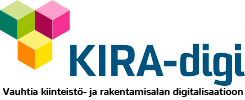Improving the efficiency of tendering
Duuers's project created a basis for a solution that improves and speeds up the process of managing invitations to tender in a major contract.
What kind of problem was the project trying to solve?
In major contracts, subcontracting and additional work result in a large number of invitations to tender and tender offers, and there is notable room for improvement in their quality, comparability and passing rates.
Objective: enabling new working methods
The main objective of the experimental project was to create and validate a basis for a solution that will enhance quality and accelerate the process of managing invitations to tender. The additional value obtained by the client was validated and quantified via prototypes during the project. The aim was to enable the formation of new working and operating approaches, improve the productivity of the company as well as make room for new solutions and developing the company by freeing up time from the burdensome processes.
What were the outcomes of the experiment?
The project was implemented based on previous experience, as planned. The implementation was carried out in an operating environment that was as authentic as possible via simulations conducted with the help of prototypes. The project was piloted at the Työmaapalvelut Express Oy company together with ten of its suppliers. The operators represented different sectors, their sizes varied and they were at different stages of digitalisation.
The most important things learned in the project were the following:
- Framework agreements are common practice in the sector. Agreements are reviewed and compared by responding to a highly specified invitation to tender and often by negotiating face-to-face.
- After the actual framework agreement has been concluded, orders are often confirmed at a very fast rate.
- The invitations to tender may be very extensive and detailed, which makes their standardisation challenging with the current operating models. Changing the operating models may be a long process involving legislation, among other things.
- The terminology varies by sector and, even within sectors, there are differences that may cause misunderstandings.
- The project gave us further confirmation that the current direction chosen by Duuers in product development is the right one and in fact solves the biggest problems that the already interviewed companies have in the tendering process.
- We made the decision not to continue the experimental project further as the experiment reached the aim of confirming that there was also considerable room for improvement in the process of inviting tenders from subcontractors. The tool for managing invitations to tender will only supplement Duuers's existing solution.
- From the business point of view, a tool for managing invitations to tender would be challenging on its own as it would not solve the wider problematics related to the tendering process.





